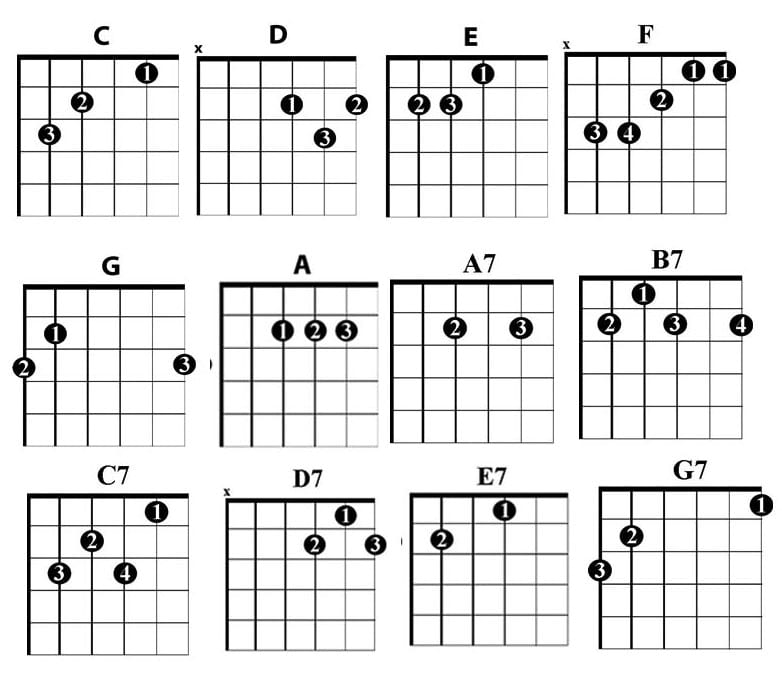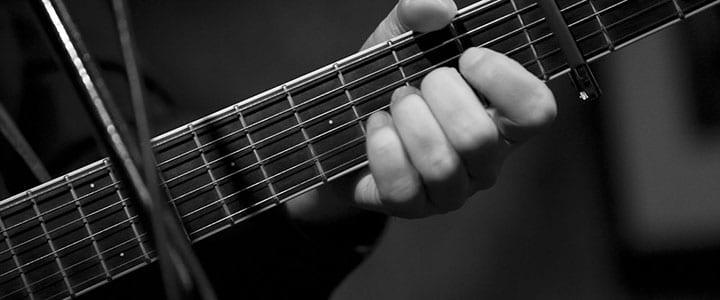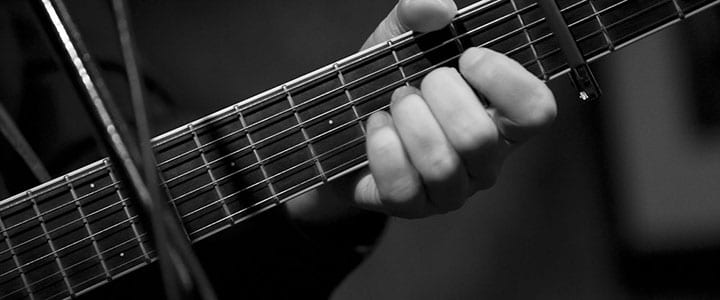Learning guitar is all about technique, chords, and progressions. If you’re an aspiring country guitarist, there are a few chords you need to learn. Here, Katy, TX guitar instructor Zachary A. breaks down the 12 essential country guitar chords you need to know.
Country music was derived from traditional Western folk music, and roots music that originated from the Mississippi Delta.
When exploring this genre, you’ll come across all kinds of country music. Some of it may sound rustic and twangy, while other times it might sound more bluesy or poppy. And we have so many guitars to thank for the way country music sounds today from the likes of Maybell Carter and Joe Maphis to Bonnie Raitt and Chet Atkins.
If you’re looking to play music like the country guitar heroes of the present and past, then it’s time to focus your attention on the 12 essential country guitar chords.
How to Play Country Guitar Chords
Whether you’re just picking up a guitar for the first time or looking to challenge yourself with a new genre, you might just find yourself interested in playing some classic country guitar songs. If that’s the case, you’re in luck because once you master a handful of guitar chord progressions, you’ll be unstoppable when it comes to the kinds of folk music you’ll be able to perform!
In our handy guide below, we’ll address 12 essential folk guitar chords, music theory, and chord progressions to help you along your musical journey.
Country Guitar Chords
If you’re dreaming of learning to play some easy country songs, the good news is that you don’t have to learn every single chord on the guitar. To start, it helps to master 12 guitar chords.
But first, what exactly is a guitar chord?
A chord refers to several notes (usually three or more) that are played at the same time on the guitar. This means you simultaneously place your fingers on certain frets while strumming specific strings. It might only involve using one to two of your fingers, but it could also involve all four fingers.
The 12 country guitar chords you’ll want to focus on at first include the following:
C, D, E, F, G, A, A7, B7, C7, D7, E7, and G7.

Focus on learning one chord at a time before moving onto the next. You’ll want to get to the point where your fingers naturally gravitate to their placements, without you having to look at a diagram or check your fingers before strumming. Once you get the hang of these chords, you can string them together to make a country song!
Country Music Theory
Now let’s look at the basic music theory behind country music. Country music uses a lot of major guitar chords. It also uses the dominant 7th chords. These chords can be built in any key using any scale with a tiny bit of music theory knowledge.
Major chords are made up of three notes: the tonic, third, and fifth interval. These three notes are pulled directly from the scale of the chord that you are playing. Let’s look at the C major chord as an example. The C major scale is C(1)-D(2)-E(3)-F(4)-G(5)-A(6)-B(7)-C(8). It consists of natural notes (no sharps or flats). To build the major chord, take the first, third, and fifth notes from the C major scale (C-E-G).
Here’s another example with the D major chord. The D major scale is D(1)-E(2)-F#(3)-G(4)-A(5)-B(6)-C#(7)-D(8). Take the first, third, and the fifth notes, which are D, F#, and A.
Building the dominant 7th chord is just as simple as building a major chord, but we add one more step to the process. First, take the first, third, and fifth notes from the desired scale. The next step is to take the seventh note from the desired scale.
For the D dom7 chord, use the D major scale (D-E-F#-G-A-B-C#-D). Use the first, third, fifth, and now, the seventh note. This gives you D-F#-A-C#.
For a minor chord, take the first, third, and fifth notes from the scale, but this time, use the minor scale rather than the major scale. Try this with the C minor chord. The C minor scale is C-D-D#-F-G-A-A#-C. When you pull the first, third, and fifth notes, you get C-Eb-G. This process is a lot easier when you memorize the major and minor scales. Remember the steps: W-W-H-W-W-W-H for the major scale, and W-H-W-W-H-W-W for the minor scale.
Country Chord Progressions
Now that you have those folk guitar chords down pat, it’s time to move on to chord progressions. In simple terms, chord progressions refer to a string of chords that you play together to form a song. So, in this case, you will use your arsenal of country chords to play a country chord progression.
To start, try out this easy folk chord progression:
D-G-A-A7-D-G-A-A7-D
As you begin to experiment with these chords and learn to play your favorite country tunes, you’ll soon discover that there are hundreds of songs out there that use the 12 essential country guitar chords. For example, Alan Jackson’s song “Drive” uses G,D, and C, and repeats the G-D-C-C pattern for the majority of the song.
“Check Yes or No,” by George Strait, uses a I-IV-V chord progression in the key of D. The D-G-A pattern repeats throughout the song.
But you’re not just stuck with the above chord progression. You can also build new chord progressions to compose your own country music! Believe it or not, there are countless variations you can create using just those 12 chords.
Build Your Own Progressions
If you want to play and build a progression, select three or four of the 12 essential chords, and make up a progression or sequence. You can make up tons of different progressions with the 12 essential chords. Playing these progressions will help you transition from chord to chord. You can use any rhythm when you play. When you practice, you should focus on making smooth transitions (no gaps or hesitation) from one chord to the next. Start out slow, and then pick up the tempo.
I will use E major to show you how to build your own progression. Use the E major scale, lift the tonic (E), third (G#), fifth (B), and the seventh note (D#). When you build a major triad over these four notes, you get the four chords of the I-III-V-Vii chord progression. This rule will work for any chord progression you want to build.
Once you start learning classic country lyrics and chords, you’ll be able to put them all together to perform some of these famous country songs in no time at all.
Sign up for Guitar Lessons Today
While you can learn a lot about the guitar by listening to country music and following online guitar lessons, it’s easy to pick up bad habits when you’re not familiar with proper techniques. That’s why nothing beats studying with a private instructor.
When you sign up for guitar lessons with us, you have the opportunity to learn from a professional who will teach you all the ins and outs of the guitar. Whether you need help figuring out country guitar tabs or mastering a specific progression, your teacher will be there every step of the way. Sign up for your private lessons today!
Zachary A. is a guitar instructor in Katy, TX specializing in beginning and intermediate students. He is currently earning a degree in music theory. Learn more about Zachary here!
Photo by Atauri.
Maile Proctor



